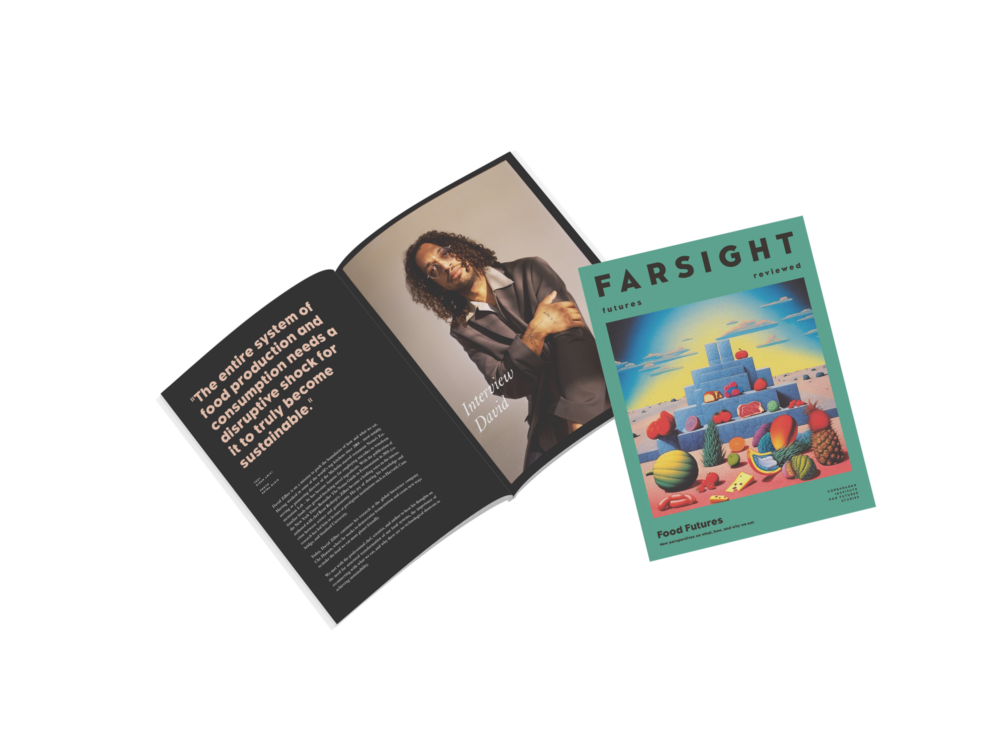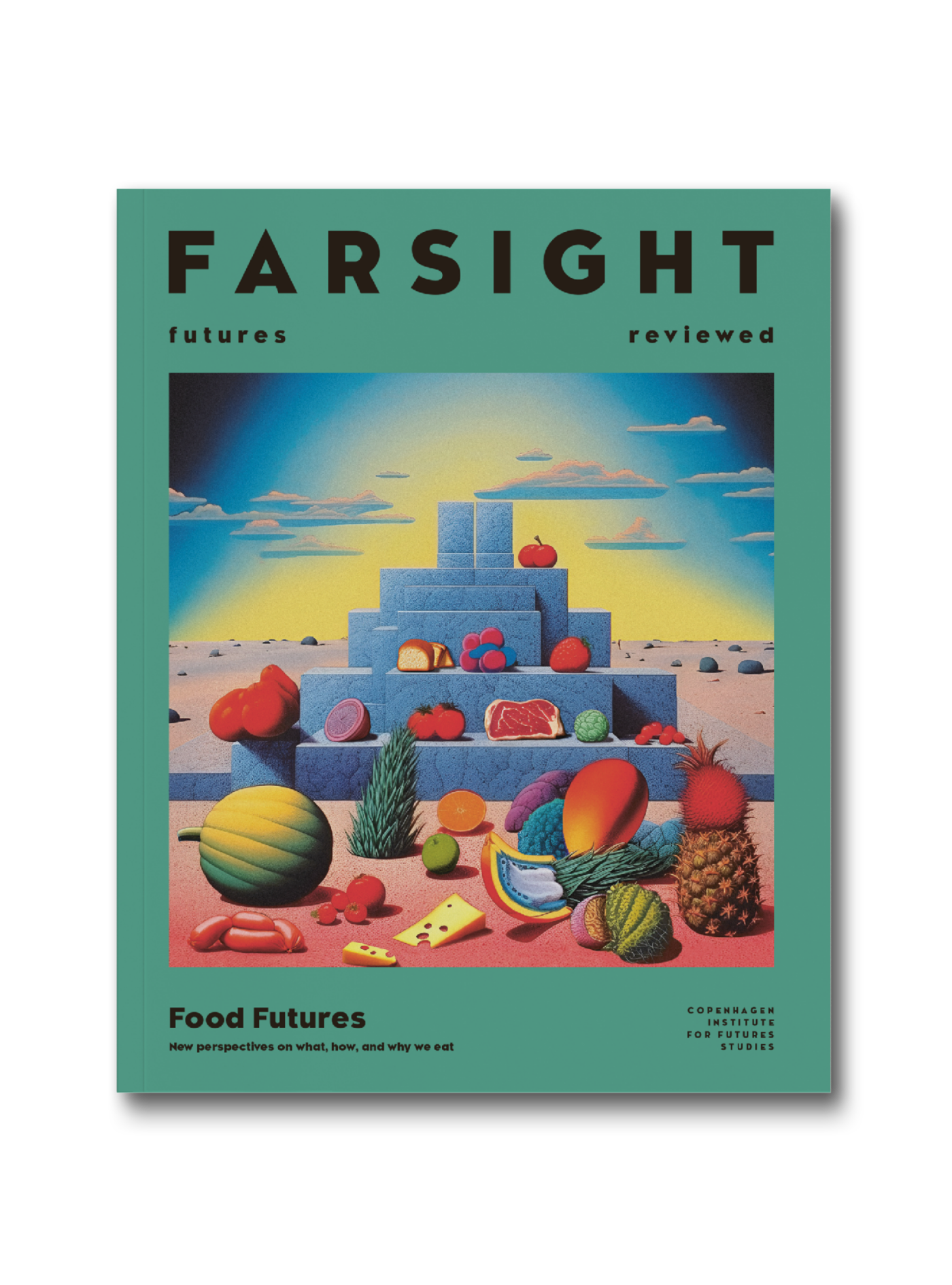
In turn, we use cookies to measure and obtain statistical data about the navigation of the users. You can configure and accept the use of the cookies, and modify your consent options, at any time.

Milk From Microbes
An interview with Niels Kristian Sørensen on how precision fermentation could revolutionise the dairy industry.
Ask a vegan what animal-based product they miss the most, and they will probably describe the mouth-watering taste and texture of cheese: a harmonious blend of salt, fat, and creamy nuttiness. In fact, the milk protein making cheese taste the way it does, casein, contains fragments of opiate-inducing casomorphins, which have been found to bind to the same brain receptors that heroin and morphine attach to, albeit in much smaller quantities. Given the unique and cherished taste and qualities of dairy products, it might seem to most consumers that plant-based and vegan alternatives lag hopelessly behind.

Or at least, it may seem that way right now. To understand how this may change in the future, we sat down with Niels Kristian Sørensen, co-founder of the Danish-based network Cow Free Protein, for a conversation about how precision fermentation technology could potentially revolutionise the production of milk proteins in tomorrow’s staple foods.
Raised on a farm in Western Jutland among cows, Niels Kristian has over twenty-five years of experience working in dairy-related industries (seventeen years at the biotech giant Chr. Hansen and eight years at dairy conglomerate Arla Foods). Today, he is an entrepreneur and independent consultant working to connect key stakeholders within the rapidly accelerating field of plant-based and cellular food production.
What caused your shift from the corporate world to investigating the future of food – and specifically, precision fermentation within the dairy industry?
After working at Chr. Hansen and Arla Foods for over 25 years, I had a brief stint working for the American multinational FMC where, based on my background within fermentation, I helped them spearhead a new initiative developing microbiological solutions to aid the health of plant specimens. And it was after finishing my work there that I happened to come across a report from a think-tank called RethinkX about using precision fermentation to re-create alternative animal proteins. The main takeaway from the report was this idea of applying the technology to the future of staple foods – and specifically, the unique proteins found in cow’s milk.
Although the science behind it was also fascinating, the real eye-opener for me was the report’s description of the structural consequences of precision fermentation for the dairy industry. It projected that by 2030, over half of the United States’ cattle population would be rendered obsolete due to precision fermented cow’s milk proteins. By 2035, it anticipated that only 10% of today’s cattle population in the US would be left. Now, I do think that the track towards cattle depopulation will be slower in Europe than in the US (if it does happen), but it’s not unreasonable to discuss the significant implications, as well as opportunities involved in such a radical change in the dairy industry – both from a corporate and societal perspective.

Broaden your horizons with a Futures Membership. Stay updated on key trends and developments through receiving quarterly issues of FARSIGHT, live Futures Seminars with futurists, training, and discounts on our courses.
become a futures memberThese insights eventually led me to establish a Danish network of industry actors, researchers, and relevant stakeholders which today has become Cow Free Protein. The aim of the network is to enlighten members on their respective goals and opportunities within cellular food production, and since we began in 2021, developments within the sector have only speed up. We can barely keep track!
Is it correctly understood that in traditional fermentation, microbes convert foods into things like beer or yoghurt, whereas precision fermentation is well, more ‘precise’? By applying synthetic biology to a sample of host microbes, we can create ‘cell factories’ that are programmed to ferment into a specific ingredient – an enzyme or food additive, for example.
Exactly. Although there is a lot of new development happening in the field, it’s important to stress that precision fermentation is not a new technology. The Danish biotech company Novozymes uses the technique to produce the enzymes used in our laundry detergent powders. Chr. Hansen uses it to for their production of coagulants – a core ingredient for turning milk into cheese.
Is there a reason why the Cow Free Protein network is located in Denmark? You mentioned that the US would likely outpace Europe within the sector. In addition, there are several start-ups around the globe working on cellular food production using precision fermentation. How can a country of just over 5 million inhabitants have a diverse and large enough network to compete?
For international readers, I can see why it might be a bit confusing. But although Denmark is a small country, we do have an incredibly strong tradition within the biotech and the dairy sectors. We are home to key global players like Novozymes, Chr. Hansen, and Arla Foods. Even American multinationals like IFF (International Flavors & Fragrances Inc.) have strong roots in Denmark. And that’s just the ingredients side of the industry. If you also consider those dealing with equipment, then we have GEA and TetraPak (who are German and Swedish respectively) with large presences in Denmark. Lastly, we have a great network of research-led universities, which ends up creating a uniquely strong melting pot.
With such a diverse range of stakeholders in the network, how can a common objective or goal be established? I can imagine that within such a rapidly developing and financially lucrative sector such as cellular food production, there’s a level of hesitancy to be too open about what one’s own company is doing to use the technology.
There is absolutely no expectation that key industry players will share their inner-most trade secrets with others in the network. Instead, we take an explorative approach in our workshops and meetings, selecting key themes relevant for us all and exploring the consequences of, say, precision fermentation in different contexts. Having a diverse blend of stakeholders is really the key to making the network function.
Here’s an example: When we first started, there was a lot of scepticism surrounding the applicability of precision fermentation within the dairy industry. People were saying that “this will never work, it’s not efficient enough, and it will never be cheap enough for consumers.” However, this shared scepticism, as well as an understandable apprehension of sharing too much information among competitors, led to a realisation that the impartiality of universities could play a key role in edging the science of precision fermentation forward for everyone. On that, everyone could agree.
Is there a reason why the network focuses on cow free protein specifically, instead of other types of cellular food production? Why is precision fermentation uniquely disruptive to the dairy industry compared to other food sectors?
This is because cow’s milk is used for so many other things than dairy products like cheese and yoghurt. For example, if you were to take 10 litres of milk and turn it into cheese, you would end up with roughly 1 kilogramme of cheese and 9 litres of whey. Thereafter, you can filter out and isolate individual ingredients in the whey produced (various proteins and molecules), which could then eventually be sold to various food industries.
Like the fitness industry?
Yes, as well as the chocolate industry, for example. A large volume of all the milk in the world is actually produced for these milk-protein ingredients, rather than milk itself. With precision fermentation, one could theoretically skip the cattle stage entirely and create large quantities of whatever molecule you find relevant. Now milk, by itself, can never be made via precision fermentation. But the dairy industry is so much more than just milk as a consumable product.
I see the technology as being uniquely disruptive for the dairy industry for two reasons. The first is climate change. About 80% of the world’s cropland goes towards animal feed. The unique digestive systems of cows produce high amounts of methane gas and is a significant contributor to our global greenhouse gas emissions. I genuinely believe that we are moving towards an era where cheeses and milk become speciality products – and this is coming from someone who practically has milk running through their veins. I love milk. But I can also recognise that the dairy industry of today is unsustainable, both in terms of climate change, but also when considering the number of mouths we will have to feed in the near future as the global population rises.

Explore the world of tomorrow with handpicked articles by signing up to our monthly newsletter.
sign up hereWhat does this mean for people whose lives are dependent on producing cow’s milk today? Are we moving towards a future where we expect farmers to get industrial PhDs and conduct precision fermentation in labs, or are we going to accept mass structural unemployment of dairy farmers?
This field is notoriously filled with dilemmas, but I don’t see it as being that black and white. The pasture and cropland used for cattle today won’t just vanish but will likely be redeveloped to accommodate for produce wanted by future consumers. We’re already seeing this shift today. Of course, it is difficult to get the agricultural industry, who have invested in their livestock, equipment, and infrastructure, to make the jump into what they see as uncharted territory.
That being said, we do really want the agricultural sector within our network – right now not all of them have a presence. Interestingly enough, the sector where there has been the most interest is equipment providers. This is also indicated by the new processes built being driven by a number of start-up’s, SME’s and larger players. These new entrants have realised that there’s a great opportunity to be part of designing the future processes of precision fermentation.
How will the precision fermentation of cow’s milk proteins change the way we consume food in the future? Everyone understands how a cow’s udders can produce what eventually becomes a glass of milk or a block of cheese. But what will a synthetically made protein look like in tomorrow’s food produce?
Personally, I believe that the most likely future will be one where plant-based and precision fermented proteins converge with one another. The molecular structure of milk proteins is quite unique and cannot be found in the plant-world. They have a good amino acid composition and an exceptional ability at providing structural integrity in foods. So, there’s both the nutritional aspect, as well as the structural functionality of milk proteins, both of which are impossible to recreate using plant-based foods.
There are already examples in the market demonstrating that a combination of 20% precision-fermented milk protein in plant-based products marks a point at which plant-based foods attempting to re-create their animal-based counterparts (cheeses, for example) really begin be lifted in their texture and quality. It seems to just reach the sweet spot that pleases you, the consumer, enough to buy the alternative milk product or cheese product. It tastes good and is nutritionally well-balanced – in fact, it’s likely far more nutritious than the purely plant-based one. Furthermore, the 20% mark is a crucial figure because it will likely ensure that the price of the product isn’t too steep, either. If I were a young product developer within the food industry, I would see this as a field of incredible opportunity.
I guess one question that will inevitably arise is what this product actually is. Is it an animal-based product or is it plant-based? Is it some kind of hybrid, alien, lab-grown food we haven’t encountered before? I would personally argue that such a product would be vegan. Regardless, a discussion needs to happen around these questions if we want consumer acceptance to be as high as possible. Those are some of the themes we discuss in the Cow Free Protein network.
Earlier on, you mentioned some of the members of the network. They’re impressive names – Novozymes, Arla Foods, Chr. Hansen. Do you see any risks in a historically local industry (which can in principle be conducted by anyone) becoming controlled by a small selection of multinational biotech companies? How we can we ensure that the future of precision fermented dairy products doesn’t become too centralised?
In my view, precision fermentation is an inherently democratic technology. It enables large parts of the world, particularly in Asia, to localise production, which is something many countries there are not traditionally well-suited to do. In fact, the production of these milk proteins should be local. Even if it might sound like it’s all conducted in a small lab, there are in fact an enormous amount of goods and supplies that go into the production process. It just wouldn’t make sense to have a central hub in, say, southern Germany where all the precision-fermented milk proteins are produced. We could even relate this back to your previous question about why the Cow Free Protein network only includes Danish stakeholders currently. It’s an innately local value chain that is being created, so it’s not a coincidence that the network exists within a national context right now.

This is an article from our issue of FARSIGHT: Food Futures
Grab a copy here